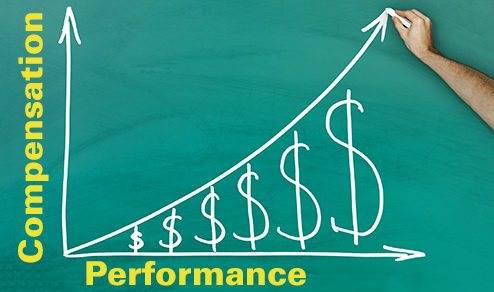Estimated readtime: 2.5 min
Authors: Ivdity Chikovani
Pay for Performance (P4P) is a financing mechanism that has flourished in recent years as countries look for innovative ways to improve coverage of health services. P4P can be employed as an approach to incentivize health care providers to improve service delivery outcomes. As policymakers in Georgia consider P4P as an approach to address primary health care (PHC) challenges, they commissioned a review of the existing evidence in the literature to inform policy discussions. The findings of that review are summarized below.
In high-income countries, P4P has been applied to achieve better quality care and greater cost savings, while in low- and middle-income countries, P4P has primarily been used to increase utilization of care. P4P has been extensively researched worldwide and has been a subject of debates between researchers and policymakers. In general, studies from the 1990s through 2000 tend to show more positive results on the effectiveness of P4P, while later studies show less favorable outcomes. This is attributed to more rigorous methodologies used in study design and analysis. [1], [2]

The variation in results is found not only across countries, but even within programs, highlighting the importance of the specific context. A study in Nigeria showed that the P4P scheme implemented in three states resulted in an increase of the average coverage for completely vaccinated children from 1.4% to 49.2% during the two-year period with variation between the states (between about 40% to 80%),[5] Although all three states had similar starting coverage points and a similar scheme design, differences in management processes, staffing, and involvement from community leaders resulted in differences in performance improvement. [6] Additionally a study in the United States found a significant increase in coverage for eight out of ten vaccines and no change for two vaccines with starting coverage rate around 80%.[7] On the other hand, a study in Rwanda demonstrated that P4P was no more effective than the existing payment method to increase full immunization coverage, and a Canadian study revealed that the P4P did not produce significant changes in immunization coverage. [8], [9] In Canada, a small incentive size in relation to base income, and concurrent changes to base payment methods may have diluted the income effects, resulting in poor response to the incentives. [9]
There are still many uncertainties with regards to P4P despite extensive research – like what is the optimal bonus size to create enough motivation while avoiding diminishing of intrinsic motivation? What is the optimal number of indicators to measure performance and avoid overburden of reporting? Is the P4P model cost-effective?[3] P4P programs can also generate unintended consequences, such as deterring health professionals from performing other activities, fabrication of the results to receive higher incentives, administrative burden, and crowding out of intrinsic motivation. Thoughtful design is needed to avoid these outcomes and a good monitoring system should be in place to capture manipulation of the results. Accountability and performance feedback to managers and providers is critical to facilitate performance improvement.
Despite mixed evidence, there is sufficient evidence demonstrating that P4P can improve immunization program performance in some settings. Careful consideration of important factors suggested by the evidence will help program planners ensure their desired outcomes are achieved.
[1] Mendelson, A., Kondo, K., Damberg, C., Low, A., Motúapuaka, M., Freeman, M., O’Neil, M., Relevo, R., & Kansagara, D. (2017). The Effects of Pay-for-Performance Programs on Health, Health Care Use, and Processes of Care. Annals of Internal Medicine, 166(5), 341–353. https://doi.org/10.7326/M16-1881
[2] Scott, A., Liu, M., & Yong, J. (2018). Financial Incentives to Encourage Value-Based Health Care: Medical Care Research and Review. https://doi.org/10.1177/1077558716676594
[3] Gupta, N., & Ayles, H. M. (2019). Effects of pay-for-performance for primary care physicians on diabetes outcomes in single-payer health systems: A systematic review. The European Journal of Health Economics, 20(9), 1303–1315. https://doi.org/10.1007/s10198-019-01097-4
[4] Markovitz, A. A., & Ryan, A. M. (2017). Pay-for-Performance: Disappointing Results or Masked Heterogeneity? Medical Care Research and Review, 74(1), 3–78. https://doi.org/10.1177/1077558715619282
[5] Odutolu, O., Ihebuzor, N., Tilley-Gyado, R., Martufi, V., Ajuluchukwu, M., Olubajo, O., Banigbe, B., Fadeyibi, O., Abdullhai, R., & Muhammad, A. J. G. (2016). Putting Institutions at the Center of Primary Health Care Reforms: Experience from Implementation in Three States in Nigeria. Health Systems and Reform, 2(4), 290–301. https://doi.org/10.1080/23288604.2016.1234863
[6] Mabuchi, S., Sesan, T., & Bennett, S. C. (2018). Pathways to high and low performance: Factors differentiating primary care facilities under performance-based financing in Nigeria. Health Policy and Planning, 33(1), 41–58. https://doi.org/10.1093/heapol/czx146
[7] Gleeson, S., Kelleher, K., & Gardner, W. (2016). Evaluating a Pay-for-Performance Program for Medicaid Children in an Accountable Care Organization. JAMA Pediatrics, 170(3), 259. https://doi.org/10.1001/jamapediatrics.2015.3809
[8] Basinga, P., Gertler, P. J., Binagwaho, A., Soucat, A. L., Sturdy, J., & Vermeersch, C. M. (2011). Effect on maternal and child health services in Rwanda of payment to primary health-care providers for performance: An impact evaluation. The Lancet, 377(9775), 1421–1428. https://doi.org/10.1016/S0140-6736(11)60177-3
[9] Li, J., Hurley, J., DeCicca, P., & Buckley, G. (2014). Physician response to pay-for-performance: evidence from a natural experiment: physician response to pay-for-performance. Health Economics, 23(8), 962–978. https://doi.org/10.1002/hec.2971
[10] Vlaanderen, F. P., Tanke, M. A., Bloem, B. R., Faber, M. J., Eijkenaar, F., Schut, F. T., & Jeurissen, P. P. T. (2019). Design and effects of outcome-based payment models in healthcare: A systematic review. The European Journal of Health Economics, 20(2), 217–232. https://doi.org/10.1007/s10198-018-0989-8
